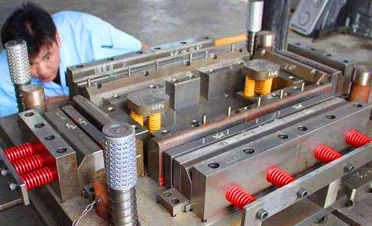sand cast iron smooth
The Art of Sand Cast Iron Achieving Smooth Surfaces and Strong Structures
Sand casting is one of the most ancient manufacturing processes still in active use today, and its versatility makes it a favorite among engineers and designers. Among various metal alloys, cast iron is particularly popular due to its excellent fluidity, resistance to deformation, and optimal wear characteristics. However, the ambition to achieve a smooth surface finish in sand-cast iron products adds a layer of complexity to this otherwise straightforward process.
Understanding Sand Casting
Sand casting involves creating a mold out of sand, which is then filled with molten metal to produce a desired shape. The process begins with the creation of a pattern, usually made from metal, plastic, or wood. This pattern is inserted into the sand mixture to create a negative cavity. Once the mold is ready, molten cast iron is poured into it. After cooling and solidification, the mold is broken apart to reveal the finished product.
While sand casting is a cost-effective method for producing complex shapes, achieving a smooth surface finish can be a challenge. Sand grains create micro-level roughness, which typically results in a texture that can be aesthetically unpleasing or functionally inadequate for many applications.
Achieving Smooth Finishes in Sand Cast Iron
To attain a smooth surface finish in sand cast iron products, manufacturers employ several techniques and best practices
1. Sand Selection The choice of sand significantly impacts the finish quality of the casting. Fine-grained sands provide a smoother surface finish compared to coarser grains. Silica sand is the most commonly used, but variations exist that can enhance the smoothness, such as adding a fine clay content or using resin-bonded sand.
sand cast iron smooth

2. Pattern Surface Treatment The surface of the pattern used to create the mold can also influence the final texture. Patterns are often polished or coated with a release agent to create a smooth mold surface. This ensures that the molten metal can flow easily and reduces the likelihood of defects in the final cast.
3. Mold Preparation In addition to selecting the right sand, the preparation of the mold itself is crucial. Proper compaction of the sand ensures that it retains the detailed features of the pattern while minimizing surface imperfections that can transfer to the casting.
4. Pouring Techniques The manner in which the molten iron is poured can affect the surface quality. A controlled pouring speed reduces turbulence, which can introduce air bubbles and result in rough surfaces. Pouring from a height or in a manner that minimizes splashing can also help maintain a smooth finish.
5. Post-Casting Treatments Once the casting is completed, various finishing techniques can be applied to enhance the smoothness. Techniques such as grinding, sanding, or shot blasting can remove surface imperfections and greatly improve the aesthetic quality of the cast iron piece.
6. Use of Coatings In some cases, applying coatings post-manufacturing can help achieve the desired smoothness and protect the surface against corrosion and wear. Epoxy or paint can provide both an attractive finish and functional benefits.
Conclusion
The techniques for achieving smooth surfaces in sand-cast iron are not only critical for aesthetic value but also essential for performance in many engineering applications. A smooth surface can reduce friction, enhance wear resistance, and improve the overall longevity of the component. As technology evolves, manufacturers continue to refine their methods, ensuring that the age-old practice of sand casting remains relevant and effective in today’s industry.
In essence, the art of sand casting does not merely rest on the successful replication of patterns but also on the mastery of achieving surface perfection, particularly when it comes to sand-cast iron. With ongoing innovations and refinements, the future of sand casting looks promising, with smooth, durable castings ready to meet the challenges of modern engineering demands.
-
OEM Sand Cast Pump Valve Fittings - Baoding Hairun Machinery And Equipment Trading Co., Ltd.NewsJul.31,2025
-
OEM Sand Cast Pump Valve Fittings - Baoding Hairun | Precision Engineering, CustomizableNewsJul.30,2025
-
OEM Sand Cast Pump Valve Fittings - Baoding Hairun Machinery And Equipment Trading Co., Ltd.NewsJul.30,2025
-
OEM Sand Cast Pump Valve Fittings - Baoding Hairun Machinery And Equipment Trading Co., Ltd.NewsJul.30,2025
-
OEM Sand Cast Pump Valve Fittings - Baoding Hairun Machinery|Precision Engineering&Fluid ControlNewsJul.30,2025
-
OEM Sand Cast Pump Valve Fittings - Baoding Hairun Machinery And Equipment Trading Co., Ltd.NewsJul.30,2025















